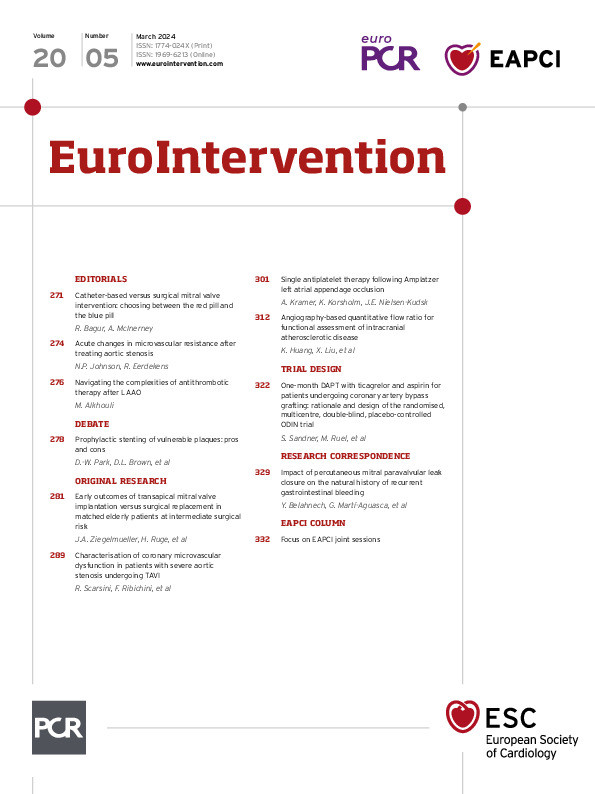Almost as soon as the concept was formulated, decades ago, during the heyday of such legendary cardiologists as Valentin Fuster and Renu Virmani, the debate around vulnerable plaques was, to say the least, animated. Questions surround their management to this day, and we were curious, posing the question to several of our fellow interventional cardiologists of just how proactively they would choose to stent – or not – vulnerable plaques. What did they reply, and where do you stand? Join us here.
Transcatheter implantation versus surgical replacement of the mitral valve in intermediate-risk patients
Johannes A. Ziegelmueller, Hendrik Ruge and colleagues investigate 30-day device and procedural success of transcatheter mitral valve implantation compared to surgical mitral valve replacement. Although survival and neurological, renal and bleeding complications were similar among the groups, transfusion requirements and hospital length of stay were lower after transcatheter mitral valve implantation.
Coronary microvascular dysfunction in aortic stenosis patients
Roberto Scarsini, Flavio Ribichini and colleagues establish an association between coronary microvascular dysfunction − defined by thermodilution-derived microvascular resistance reserve − extravalvular cardiac damage and a low-flow phenotype in patients with severe aortic stenosis undergoing transcatheter aortic valve implantation.
Single antiplatelet therapy following Amplatzer left atrial appendage occlusion
Anders Kramer, Jens Erik Nielsen-Kudsk and colleagues demonstrate that patients receiving single antiplatelet therapy after left atrial appendage occlusion with the Amplatzer device had low rates of device-related thrombosis, ischaemic stroke and bleeding.
Angiography based quantitative flow ratio for functional assessment of intracranial atherosclerotic stenosis
After determining that haemodynamic assessment using the Murray law-based quantitative flow ratio (μQFR) is significantly associated with symptomatic intracranial atherosclerotic stenosis, Kangmo Huang, Xinfeng Liu and colleagues developed, and now present, a nomogram − integrating conventional risk factors and Murray law-based quantitative flow ratio − that could serve as a useful tool for risk stratification in patients with this condition.

